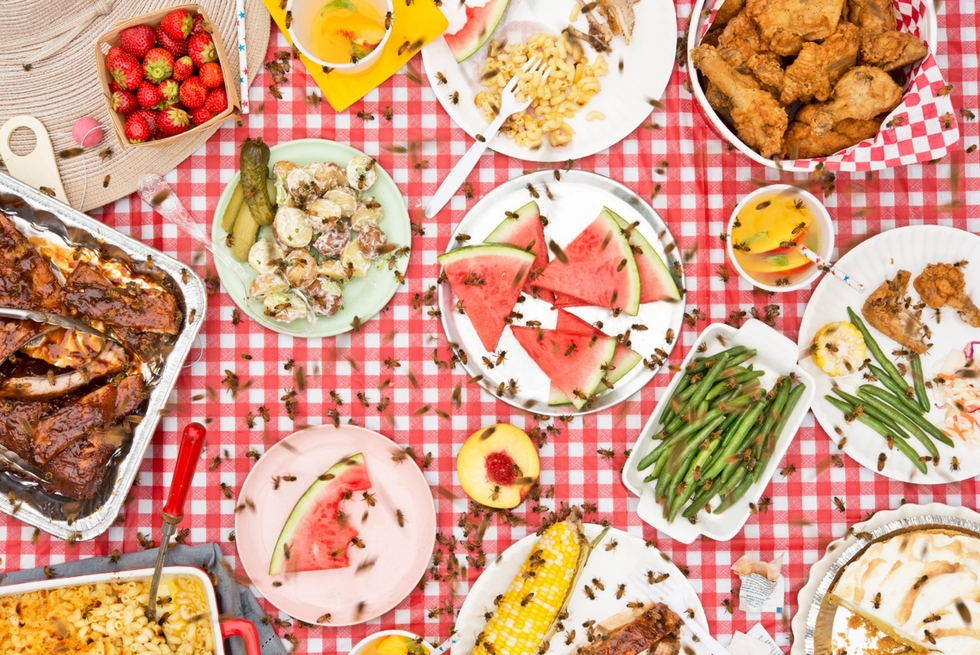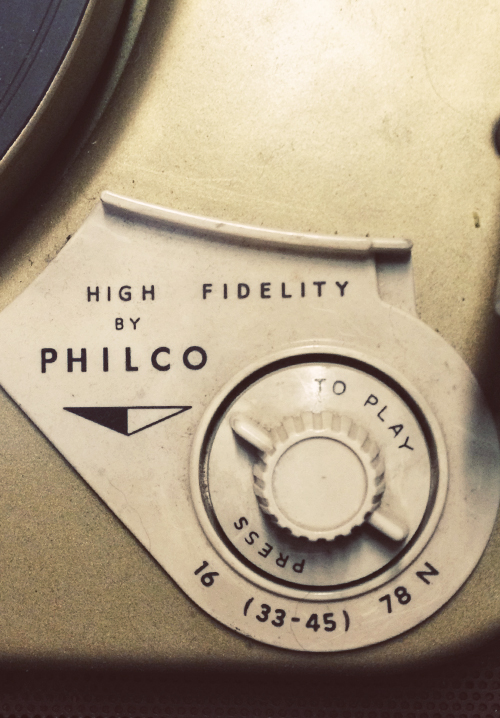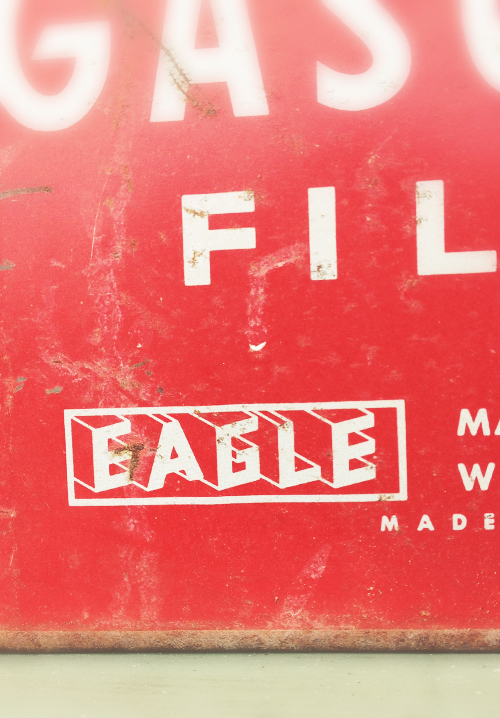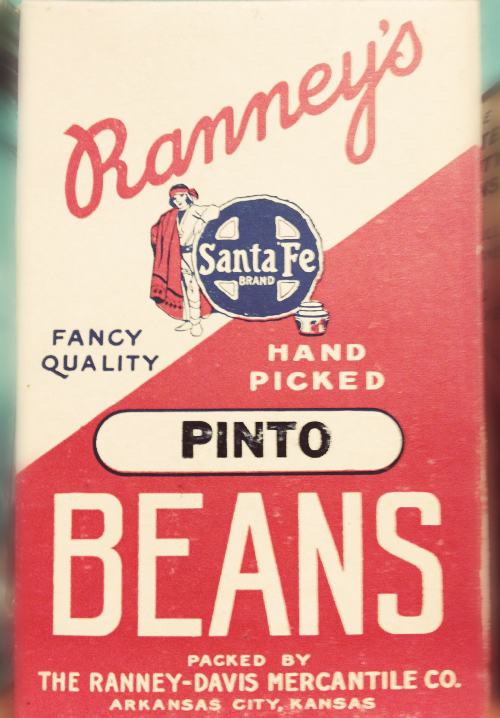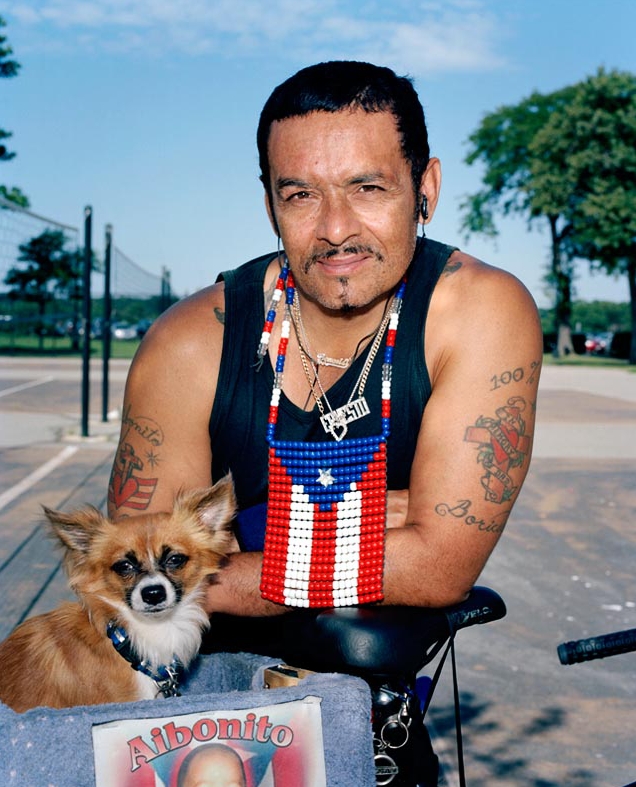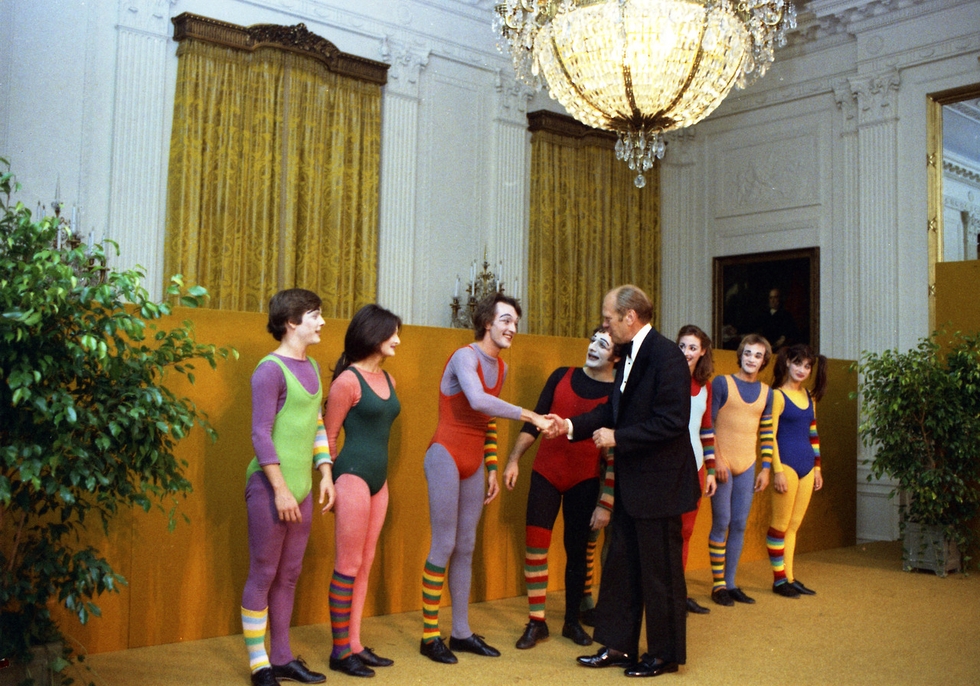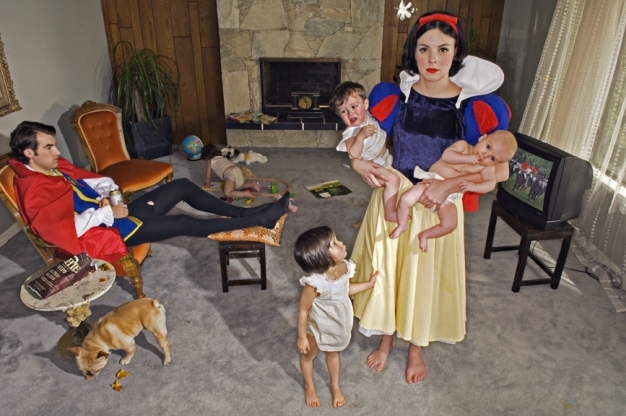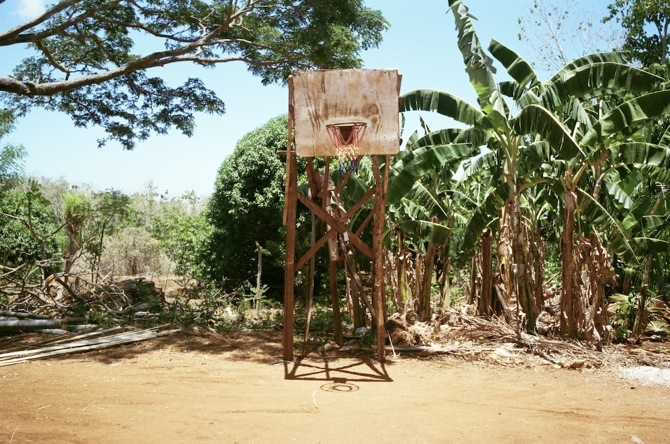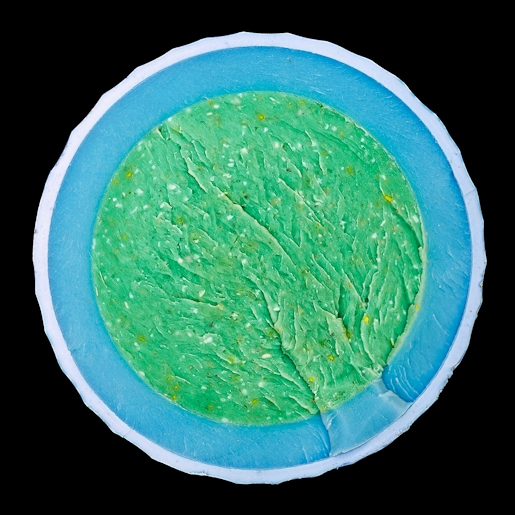Save for the assassination scene, the creepy subtext of the "Meals Interrupted" photo series is that something unknown but presumably terrible happened to the diners mid-meal. The series is a collaboration between photographer Davide Luciano and food stylist Claudia Ficca, who has likely never used a swarm of bees or a charred lobster in her previous work. The pair, who also happen to be husband and wife, shot the photos in each of their hometowns, New York and Montreal.
See more work from Luciano and Ficca.


You know that feeling when you see a great typeface on an old stove or a vintage book, and you can't do much to resist snapping a quick photo? Designer Jonathan Lawrence's Type Hunting Tumblr collects those impulsive images documenting anything from vintage marshmallow cans (?) to gas stations, and just about every foodstuff ever packaged with a great typeface. The majority of the posts feature bygone lettering, but sharp eyes can pick out modern brands that haven't updated in decades. Lawrence lives and works in Atlanta, so there's a good chance most of the artifacts were found in Georgia.
On the long list of things New York City claims to do best, the beach is rarely mentioned. While NYC beaches aren't highly regarded for their solitude or white sand, city dwellers still head to waterfronts in Brooklyn, Queens, and the Bronx in droves when the sun gods beckon.
NYC-based photographer Wayne Lawrence grew up in Saint Kitts, an island made almost entirely out of beaches, so his photo series of Orchard Beach dwellers on the only public beach in the Bronx seems like a natural choice. The title "Orchard Beach: the Bronx Riviera," by the way, is a play on the beach's original nickname in the 1930s, New York Riviera. [photos via Agnostica / Courtesy of the Artist]
See more work from Wayne Lawrence.


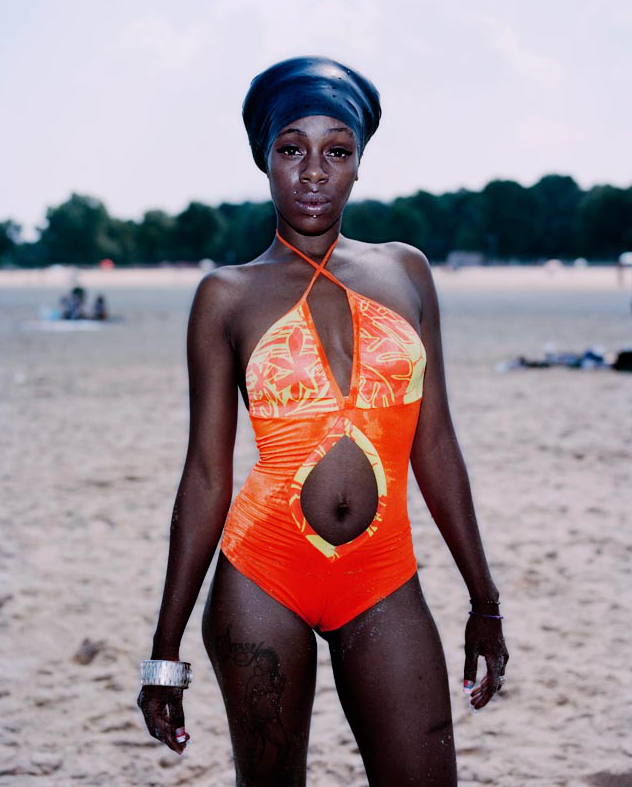
Like Andy Warhol, Russian filmmaker Andrei Tarkovsky (director of the cerebral sci-fi movies Solaris and Stalker, among others) had a fondness for the instant results and effects of images produced from Polaroid cameras. He took photos at home and in Italy. A Russian photography blog has digitized the entire collection. Many of the images (we've selected a few below) tend to evoke an emotional state, a kind of magical nostalgia, that Tarkovsky never tired of exploring in his films.



The photo above is of the 38th President of the United States, Gerald R. Ford, greeting a troupe of mimes in the White House. Turns out, this group from the Claude Kipnis Mime Theatre was hired for a performance at a state dinner to entertain esteemed guests from Poland. While the circumstances for the picture are not so odd, the image is a reminder that strange stuff happens in the White House almost daily. The Tumblr Our Presidents, run by the National Archives, collects some of the lesser seen moments of Presidential life, including Richard Nixon's last meal in the White House (below), and a speech prepared in case Apollo astronauts were unable to leave the Moon (also below).
Follow Our Presidents on Tumblr for a feed of more serious moments in history, too.
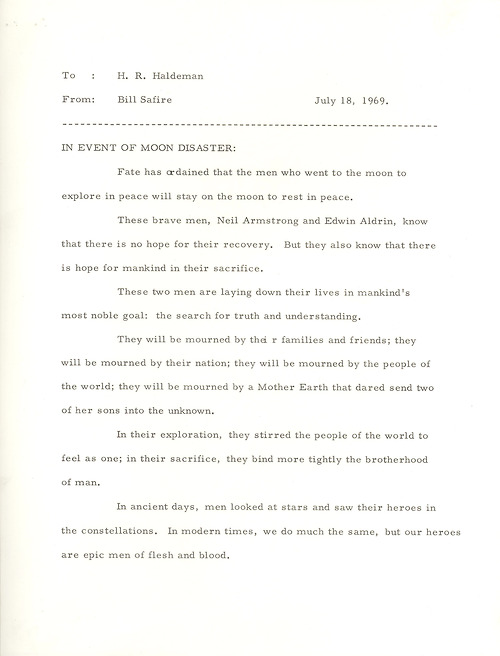
Dina Goldstein's "Fallen Princesses" photo series was conceived as a response to two near simultaneous developments in the lives of two women in her life, her mother and her daughter. Just as her daughter started to show an interest in princess-based fairy tales, she recalls that her mother was diagnosed with breast cancer. The series started with the image of Rapunzel losing her hair after chemo treatment, and progressed to include a depressed looking Snow White in a not-great marriage, and a lonely cat lady version of Pocahontas.
See the rest of the series at Cargo.
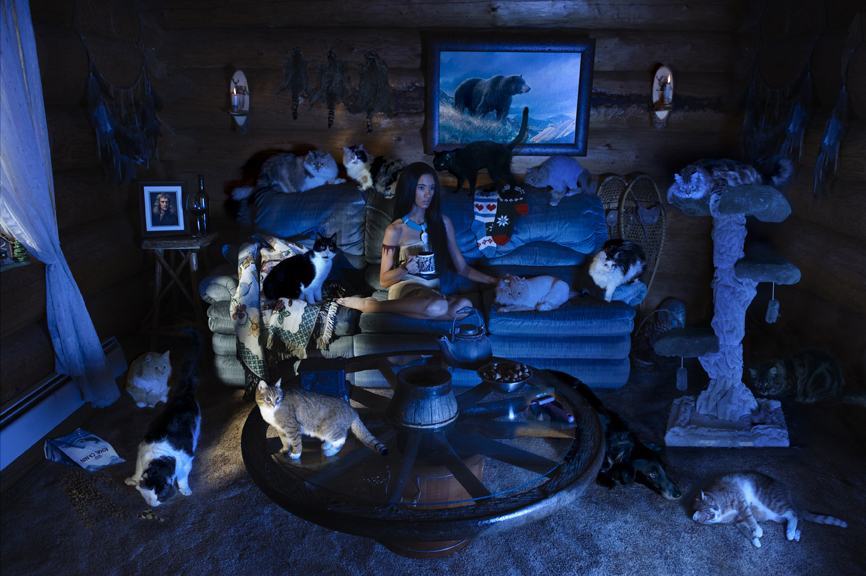
Relatively unknown street photographer Adrian Skenderovic has been shooting basketball hoops during his travels around the globe. Some are makeshift, some neglected, while others are more than up-to-snuff despite their far-flung locations. The photographer is still exploring different angles and formats. The empty court with tropical backdrop shows up a bit, but also the sun-baked, holding-on-by-a-thread hoop close-up. Both formats are effective in their own way and have us longing for a good neighborhood ballgame, as well as a tropical adventure. Time to work on the fadeaway jumper.
See more Lost Hoops at Adrian Skenderovic's photography site.

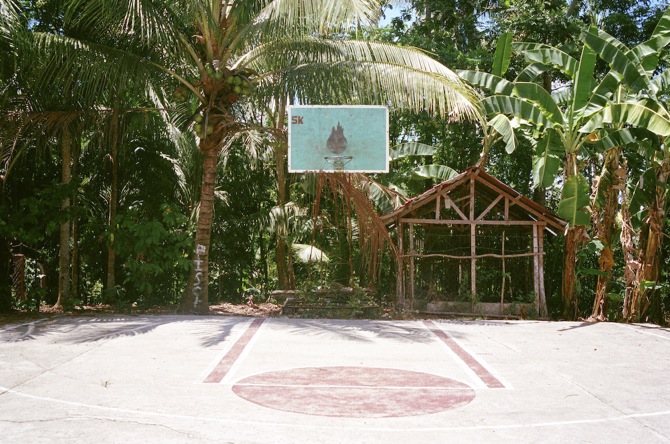
Photographer James Friedman doesn't play golf. At one point, however, he did have an inexplicable collection of golf balls. Naturally he did what any non-golfing photographer would do with such a collection: cut them in half for a photo series called "Interior Design". Considering that most golf balls, stripped of logo, are completely indistinguishable from one other to the untrained eye, the colorful cores discovered in the series are surprising. The golf ball cross sections resemble planetary bodies, some with two or three layers, and others with just a single multicolor filling. Although sporting goods companies might not approve, we're curious to see who manufactured each ball, and some dates would add a welcome context.
See a few more cross sections and some of Friedman's newer work.



Designer Andy Welsh's Floating Structures series began as a way to look at architecture without context. His manipulations present multiples of the familiar lines and shapes of recognizable buildings in cities like Singapore, Tokyo, and London, in new orb-like forms colored only with fuschia and pale yellow tones.
Lloyd Aéreo Boliviano, more commonly known as LAB, was Bolivia's oldest airline before it was ordered to close by the Bolivian government in 2007. Once a much larger operation, the airline and its dilapidated headquarters are now manned by a single employee.
Photographer Nick Ballon first came across LAB's strange story after noticing one of their disused buildings while waiting for a flight out of Bolivia. Instead of trying to track down whomever was left in charge with a series of emails and phone calls, he simply knocked on the closest door he could find. According to an interview at Creative Review, within minutes, he was speaking with the CEO about LAB's story.
Ballon's research, which falls under the larger umbrella of The LAB Project, has led to a book, a gallery show, and countless documents and photos on his LAB Project site.
Photos from The LAB Project will be on display at the KK Outlet in London for the entire month of August.
